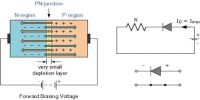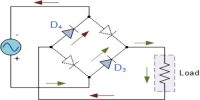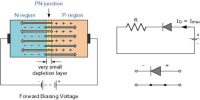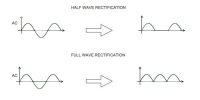A transistor is a device that regulates current or voltage flow and acts as a switch or gate for electronic signals. It is composed of semiconductor material usually with at least three terminals for connection to an external circuit. It consists of three layers of a semiconductor material, each capable of carrying a current. It can act as a switch and an amplifier. It converts audio waves into electronic waves and resistor, controlling electronic current.
Utility or Advantages of a Transistor
(1) Size is small
(2) It works at a very low voltage
(3) Its action is instantaneous
(4) It has high longevity
(5) It can withstand mechanical vibration
(6) It is very cheap.
(7) It has output voltage remains constant in spite of the change in temperature.
(8) The output impedance is very low.
(9) The power transistor can be operated at switching frequencies in the range of 10 to 15 kHz.
(10) It can be used to control power delivered to the load, in inverters and choppers.
Disadvantages:
(1) It is sensitive to temperature,
(2) It produced very low energy.
(3) The power transistor cannot be operating satisfactorily above the switching frequency of 15 kHz.
(4) It can be damaged due to the thermal runway or second breakdown.
(5) It has a reverse blocking capacity is very low.
(6) The output voltage cannot be changed easily as no such means is provided. Therefore the DC output voltage is not adjustable.
Uses: It is used for the amplification of the electric signal. Transistor is used as a high-speed switch.














